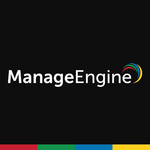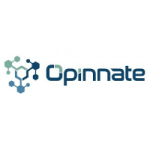What is our primary use case?
We have actually played around quite a bit with the network flow piece of it (with the routers). That has helped us troubleshoot a few things with data flow and where it might be stopped or redirected to an incorrect location.
We use the following components of AlgoSec: AlgoSec Firewall Analyzer (AFA), FireFlow, and AppViz. We have a very limited cloud deployment at the moment.
We have a very complex network environment. It requires very specific compliance protocols to be put in place, including HIPAA compliance, PCI compliance, and HITRUST compliance. Therefore, we have very specific rules that we have to adhere to. We have 13 sites with very complex setups at each site to allow for redundancy and security, utilizing multiple vendors and technologies to achieve that.
We are currently developing and going to have a hybrid deployment for the cloud and on-prem. Right now, 98% of our stuff is on-prem, and that will change. We are probably going to be about 75% on-prem and 25% in the cloud, which is very complex. This will allow our external vendors and external clients in as well as all our internal resources.
How has it helped my organization?
They have compliance rules built right into the system. Right out-of-the-box, you can run a compliance check against your environment that tells you exactly what needs to be fixed and why. Their compliance check is phenomenal. They even have a base compliance check. So, you can set your own standards to make sure that all your equipment meets those base compliances that you have for internal standards.
AlgoSec has reduced the time it takes to implement firewall rules in our organization. While our usage of it has been fairly limited to what we have tested so far, it has probably reduced the time by about 30%.
It gives us 100% visibility into our network security policies. It has given us a couple of surprises. Over the years, the network that we are administrating has been subject to people who have an idea of how a network should be set up. That differs from technician to technician or engineer to engineer. So, we are finding little pockets of hidden little self-engineered configurations and the way things were done that nobody knew about. Once the engineer left, the knowledge of that setup disappeared. You don't know about those until something either goes wrong, or you get something like AlgoSec to discover it for you, and it says, "Hey, there is this going on over here."
It has helped us figure out how it was set up and why it was set up that way, then allowed us to engineer it so it fits a little better into our standards. We found a couple of secrets in our network that nobody would have known about. If we had an outage on those, nobody would have been able to figure them out without a tool like AlgoSec. This would have been a complete outage for our organization. Since we are healthcare insurance, that is a significant amount of money.
It has helped to simplify the job of our security engineers. We have a snapshot of where we are at with the correct data that we need to be able to fix the issues that we have. We keep finding little secret pockets of out-of-standard configurations that need to be addressed.
AlgoSec absolutely provides us with full visibility into the risk involved in firewall change requests. There is a risk analysis piece of it that allows us to go in and run that risk analysis against it, figuring out what rules we need to be able to change, then make our environment a little more secure. This is incredibly important for compliance and security of our clients. We deal a lot with patient health information that needs to be secure for physicians who are dealing with it and the patients themselves.
What is most valuable?
The most valuable for us so far has been the firewall rule analysis. Just to be able to get to a point where our infrastructure is secure and stable. The analysis runs everything that we actually need. When we run a report, we need to look at the report, then go back to the analysis because the analysis has all the information for us. We just have to match up the analysis to the report.
We have a security vendor who runs an analysis on the logs that we send them. We have multiple vendors who come in and do an annual security assessment. We have multiple vendors who come in and do an annual penetration test. We have vendors who deal with the end clients as well as vendors who deal with the servers for security, in addition to our firewalls, routers, and public interfaces. AlgoSec takes all of the information on our network, puts it into one single pane of glass where we can go and request what we need from the vendors. Plus, there are reports in AlgoSec that we can run and send out to our vendors so they have an eye into what we are looking at.
What needs improvement?
The reports are lacking information when they come out. They will not pull the URL or application information from Cisco FTDs. I know this works for Palo Alto Firewalls, which we currently do not have. If they could improve the integration with Cisco FTDs as a whole, that would be immensely helpful.
For how long have I used the solution?
We are actually in the process of purchasing AlgoSec. We have gone through a proof of concept with them. Right off the bat, running through that proof of concept with them was absolutely fantastic. Usually, they have an offsite proof of concept server that you connect up to, then kind of take a look at their technology to see how everything works and if you like it. However, we have a different setup onsite for some of our firewall rules. We wanted to make sure that their application/appliance worked on our internal environment. They were more than willing to set up an onsite PoC for us so we could make sure everything did work.
What do I think about the stability of the solution?
The stability is fantastic. We haven't had an issue with stability at all.
Two people are needed for maintenance (someone for backup plus me). Maintenance on it is fairly limited. It is very automated in the way that it handles all our data and firewall needs.
What do I think about the scalability of the solution?
The scalability is easy, just add more licenses if needed, then turn up another virtual machine. It is pretty straightforward.
There will probably be a dozen of us actually utilizing AlgoSec. This will mainly be the network and security team, then the security team themselves.
How are customer service and technical support?
During deployment, the technical support fixed our issue within 30 minutes of the phone call.
Which solution did I use previously and why did I switch?
We are in the process of doing microsegmentation right now. That is one of the reasons why we started looking into a utility like this because we needed to get that current snapshot of where we are at and where we need to go. AlgoSec is beyond phenomenal for helping to create and manage this type of initiative. With the automation piece and the fact that we can take a look at the traffic that is currently running through our firewalls and automate the rules being created for that. This will take a lot of manual work off of our shoulders that would have taken many man-hours to be able to implement.
How was the initial setup?
We ran into some errors/issues, so it probably took us a week to fully deploy it. The process was straightforward except for the typos that we had in the programming. Without those typos, it would have been up within half a day.
We had an implementation strategy that we laid out beforehand and went forward with that.
What about the implementation team?
James, the AlgoSec engineer who was working with me, spent about two weeks on and off with me trying to get the solution up and running, and he was successful at it. This was so we could utilize their proof of concept in our environment to make sure that it would fit our needs.
What was our ROI?
Because we went from having no unified tool to having AlgoSec, it has improved our security platform by probably 80% in just the short time that we have had and used it. It is invaluable. There is no question in my mind that it is a tool for anybody who has multiple sites, firewalls, and routers. It is something that everybody needs to look into getting because it is invaluable.
Even if we were to pay the first quote that we got, AlgoSec would be worth it. Just having the automation and that overall look into your security platform, you can't be without it.
What's my experience with pricing, setup cost, and licensing?
We are working with our finance department right now to be able to purchase it. The AlgoSec team is doing everything that they can in their power to get the costs down to where our budget is. They have worked a lot on it. They have cut the cost in half for us so far by questioning, "This is in the quote. Is this something that is actually needed?" They have pulled some stuff out and cut our costs down by 50% for the product itself.
Which other solutions did I evaluate?
There were four of us involved in the evaluation of the product.
We compared this tool to two other different tools. Even with their higher-end solution, when we had the full budget for this, AlgoSec was less expensive than some of the other top tools. We looked at FireMon and Tufin. The reason why we said, "No," when we had budget to FireMon and Tufin is because they were not pulling in the application data or URL data.
AlgoSec actually pulls application data and URL data in. AlgoSec is a little easier to use than the other solutions. Cisco recommended AlgoSec to us.
What other advice do I have?
Don't trust what you think you know about your network. There are surprises everywhere, and sometimes it takes a utility like this to find those.
Don't don't hesitate. Go get it. If somebody came and asked me for an analysis tool, AlgoSec would be at the top of my list.
The integration is fine.
Migration to the cloud is on our roadmap.
We have not set up any automation quite yet, but that is on the roadmap. That will make the tool even better.
I would rate this solution as a nine (out of 10).
Disclosure: PeerSpot contacted the reviewer to collect the review and to validate authenticity. The reviewer was referred by the vendor, but the review is not subject to editing or approval by the vendor.















